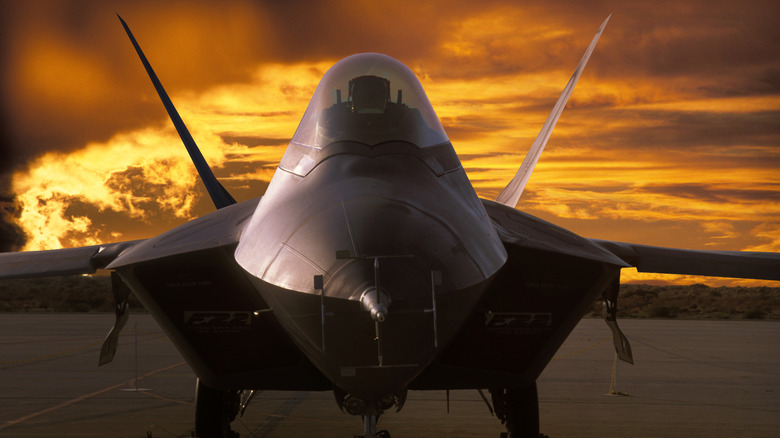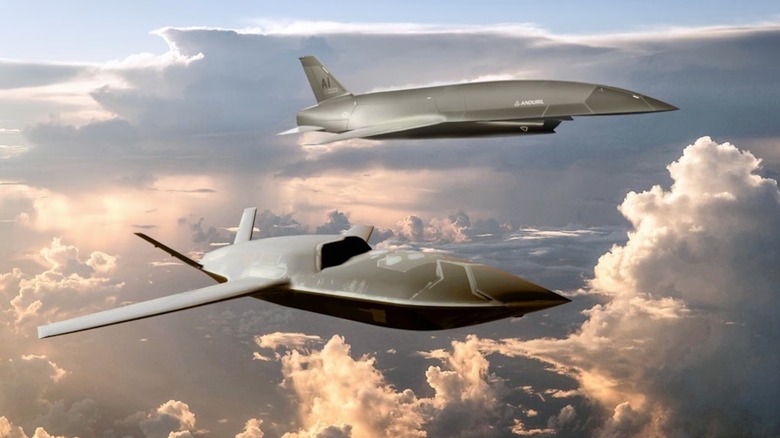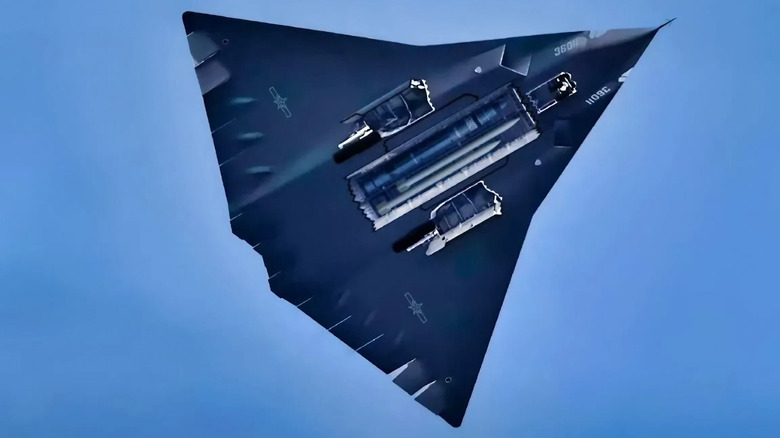What Would A 6th-Gen Fighter Jet Look Like? Here's What To Expect
It's a new world with an increasing reliance on drones for warfare. But that doesn't mean fighter jets are going anywhere. In fact, countries today are locked in a race to be the first with a sixth-generation fighter. But what even makes a fighter "sixth-generation"? As it stands, there currently isn't an agreed-upon checklist. The consensus simply points to a massive technological jump from the current fifth-gen fighter jets like the F-22 and F-35. While these aircraft were designed with the shorter ranges of European conflicts in mind, their successors are being built for the vast expanses of the Pacific.
This means they'll need greater speed, the ability to fly higher, and significantly longer range to penetrate heavily defended airspace. Visually, expect sleek, tailless designs that are even stealthier than current aircraft. So far, renderings of America's sixth-gen F-47 fighter jet show a blend of "flying wing" shape borrowed from bombers like the B-2 and modern fighter jet designs. The focus is also on significantly boosting stealth by masking the jet's heat signature from infrared sensors, on top of being hidden from radar.
One of the key ways to achieve this next-level stealth is the removal of the tail, as it slashes the radar signature from the side and rear across multiple frequencies. Aerodynamic drag is reduced, too, improving high-speed performance. Moreover, it creates additional internal space for fuel and weapons. Removing such a crucial component, however, leads to instability, so these jets need incredibly smart computers, advanced fly-by-wire flight controls, and possibly thrust-vectoring engines to stay agile.
A whole new approach
But the real revolution is happening inside. These jets will act as flying data hubs, equipped with advanced sensors looking in all directions — front, side, and back — across multiple frequencies. They'll fuse this immense amount of information to give the pilot unprecedented situational awareness. Powering these machines could be a revolutionary new type of adaptive engine, capable of shifting configurations for optimal efficiency. Interestingly, old-school dogfighting maneuverability is not a priority. Instead, the focus is on dominating from a distance.
Moreover, the sixth-generation fighter won't fly alone. A core concept is the use of AI-piloted drone wingmen, which the U.S. Air Force calls Collaborative Combat Aircraft (CCA). Think of the main fighter as a quarterback, directing a team of autonomous drones. Unofficially, this is referred to as a "family of systems" approach — and it's set to transform air combat.
CCAs will be tasked with a variety of jobs like carrying out strikes, jamming enemy radar, and scouting ahead for threats. The basic idea here is to use more expendable, uncrewed aircraft to take on higher-risk tasks. They could even create diversions to ensure that the incredibly expensive crewed fighter survives to fight another day.
Nations race to achieve air dominance
The United States is well on its way and has already secretly flown a full-scale sixth-generation prototype back in 2020. The Air Force's program, known as Next Generation Air Dominance (NGAD), is developing the newly designated F-47, and the Pentagon's latest budget proposal heavily favors this aircraft, allocating $3.5 billion for its development.
Across the pond, a multinational European effort is underway with the Global Combat Air Program (also known as Tempest), which is expected to have a demonstrator ready to fly by 2027. Russia is also in the game with its Mikoyan PAK DP, or MiG-41. Moscow has made ambitious claims for this aircraft, suggesting it will reach speeds of Mach 4, fly at near-space altitudes, and even carry anti-missile lasers. It's targeting a first flight sometime in 2025.
However, given Russia's delays with mass-producing its fifth-generation Su-57, some are skeptical about that timeline. Meanwhile, China's Chengdu is working on the J-36 fighter, which was even spotted testing in April.


